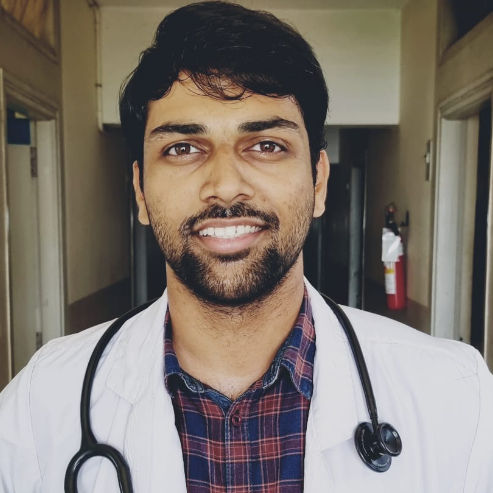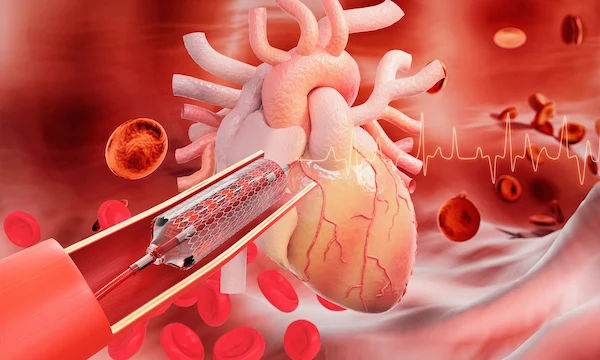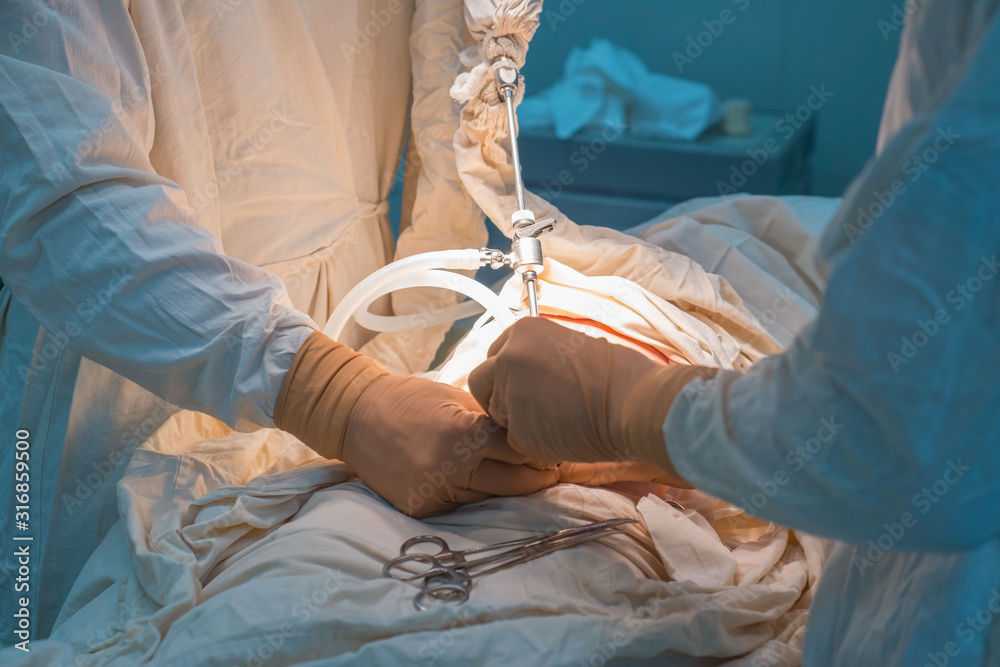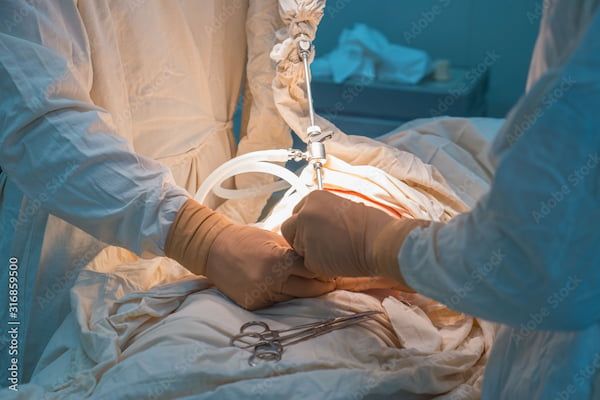Stroke Surgery: A Comprehensive Overview
Get a comprehensive overview of stroke surgery. Learn about the types of procedures for both ischemic and hemorrhagic strokes, and when surgical intervention is the right choice.


A stroke is a serious medical condition that occurs when blood flow to a part of the brain is interrupted, leading to brain cell damage. Depending on the severity and type of stroke, surgery may be required to restore blood flow or repair damage. If you or a loved one has been advised to undergo stroke surgery, it’s natural to have questions and concerns. This article will help you understand the basics of stroke surgery, its types, recovery, and ways to reduce risks in the future.
What Is a Stroke?
A stroke happens when:
- A blood vessel supplying the brain gets blocked (ischemic stroke).
- A blood vessel bursts, causing bleeding in the brain (hemorrhagic stroke).
Both types can lead to serious complications, including paralysis, speech difficulties, and memory problems. In some cases, surgery is necessary to prevent further damage.
When Is Stroke Surgery Needed?
Not all strokes require surgery. Doctors may recommend it in cases such as:
- Large blood clots blocking major brain arteries.
- Bleeding in the brain (hemorrhagic stroke) due to a ruptured blood vessel.
- Narrowed or weakened arteries that increase stroke risk.
Types of Stroke Surgery
Types of stoke surgery include:
1. Surgery for Ischemic Stroke (Blockage)
If a clot is blocking blood flow, doctors may perform:
- Mechanical Thrombectomy: A thin tube (catheter) is inserted into the blocked artery to remove the clot. This is most effective if done within 6–24 hours of stroke symptoms.
- Carotid Endarterectomy: If the carotid artery (neck artery) is narrowed by plaque, surgeons remove the blockage to prevent future strokes.
2. Surgery for Hemorrhagic Stroke (Bleeding)
If a blood vessel bursts, surgery may involve:
- Clipping or Coiling: A surgeon places a tiny clip at the base of the ruptured blood vessel (aneurysm) or fills it with coils to stop bleeding.
- Decompressive Craniectomy: If swelling in the brain is severe, part of the skull may be temporarily removed to relieve pressure.
Recovery After Stroke Surgery
Recovery depends on the stroke’s severity and the type of surgery performed. Here’s what to expect:
- Hospital Stay: Patients may spend days to weeks in the hospital, including time in the ICU.
- Rehabilitation: Physical therapy, speech therapy, and occupational therapy help regain lost functions.
- Medications: Blood thinners or blood pressure medications may be prescribed to prevent another stroke.
- Lifestyle Changes: A healthy diet, regular exercise, and quitting smoking reduce future risks.
How to Reduce Stroke Risk?
Even after surgery, preventing another stroke is crucial. Here are some tips:
- Control Blood Pressure – High BP is a leading cause of strokes.
- Manage Diabetes & Cholesterol – Keep sugar and cholesterol levels in check.
- Quit Smoking & Limit Alcohol – Both increase stroke risk.
- Exercise Regularly – 30 minutes of moderate activity daily improves circulation.
- Eat a Balanced Diet – Focus on fruits, vegetables, whole grains, and lean proteins.
Consult Top Specialists
When to Seek Immediate Help?
If you notice sudden symptoms like:
Numbness or weakness in the face, arm, or leg (especially on one side).
- Confusion, trouble speaking, or understanding speech.
- Severe headache with no known cause.
- Trouble seeing in one or both eyes.
- Difficulty walking, dizziness, or loss of balance.
Call emergency services immediately—every minute counts!
Consult a Specialist
If you or a loved one has had a stroke or is at risk, consulting a neurologist or neurosurgeon is essential. Apollo 24|7 offers expert consultations and advanced stroke care. You can book an appointment or schedule tests easily through their platform.
Final Thoughts
Stroke surgery can be lifesaving, but recovery requires patience and lifestyle adjustments. Early treatment, proper rehabilitation, and preventive care can significantly improve outcomes. If you have concerns about stroke risks or post surgery care, don’t hesitate to reach out to a healthcare professional.
Consult Top Specialists
Consult Top Specialists

Dr. Swathi Reddy Perugu
General Physician/ Internal Medicine Specialist
7 Years • MBBS, MD (General Medicine)
Hyderabad
Health plus, Hyderabad

Dr. Rajib Ghose
General Practitioner
25 Years • MBBS
East Midnapore
VIVEKANANDA SEBA SADAN, East Midnapore

Dr. Santanu Mandal
General Physician/ Internal Medicine Specialist
17 Years • MD (Physician), DNB (General Medicine)
Kolkata
MCR SUPER SPECIALITY POLY CLINIC & PATHOLOGY, Kolkata
(25+ Patients)

Dr. Arthi S
Family Physician
3 Years • MBBS
Bengaluru
PRESTIGE SHANTHINIKETAN - SOCIETY CLINIC, Bengaluru

Dr Venkata Naga Sai Tribhushan Rambhatla
General Physician
3 Years • MBBS
Bengaluru
PRESTIGE SHANTHINIKETAN - SOCIETY CLINIC, Bengaluru
Consult Top Specialists

Dr. Swathi Reddy Perugu
General Physician/ Internal Medicine Specialist
7 Years • MBBS, MD (General Medicine)
Hyderabad
Health plus, Hyderabad

Dr. Rajib Ghose
General Practitioner
25 Years • MBBS
East Midnapore
VIVEKANANDA SEBA SADAN, East Midnapore

Dr. Santanu Mandal
General Physician/ Internal Medicine Specialist
17 Years • MD (Physician), DNB (General Medicine)
Kolkata
MCR SUPER SPECIALITY POLY CLINIC & PATHOLOGY, Kolkata
(25+ Patients)

Dr. Arthi S
Family Physician
3 Years • MBBS
Bengaluru
PRESTIGE SHANTHINIKETAN - SOCIETY CLINIC, Bengaluru

Dr Venkata Naga Sai Tribhushan Rambhatla
General Physician
3 Years • MBBS
Bengaluru
PRESTIGE SHANTHINIKETAN - SOCIETY CLINIC, Bengaluru




